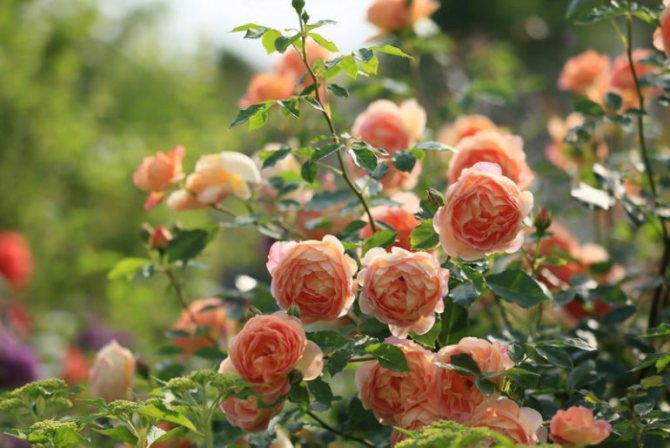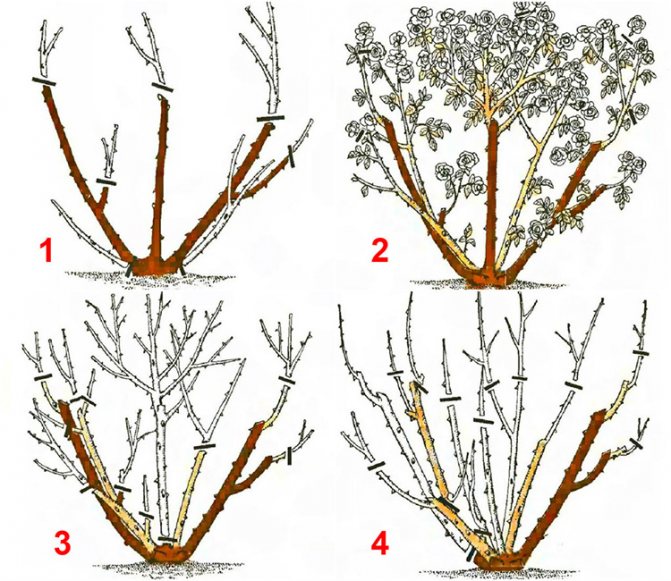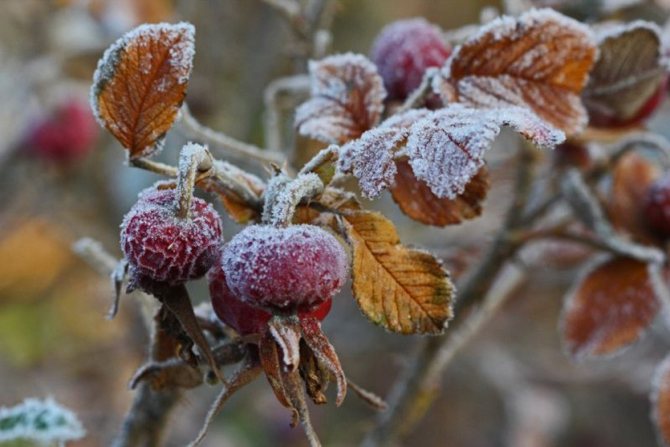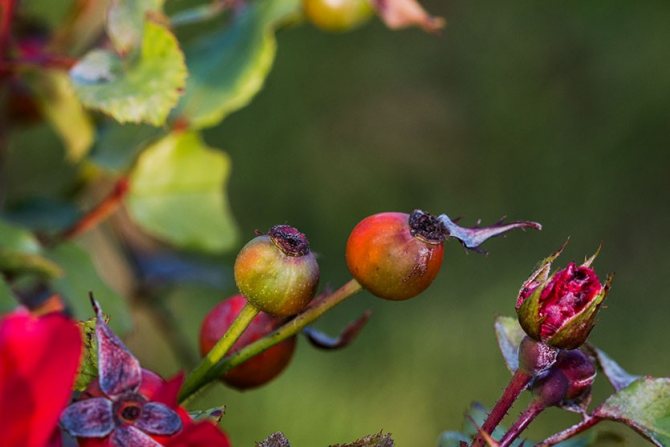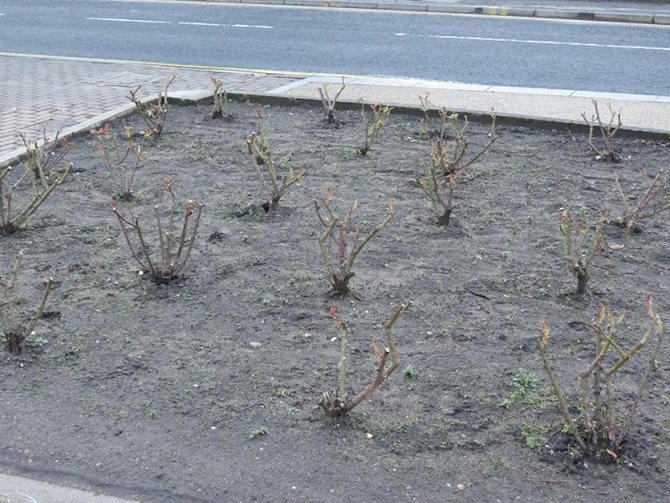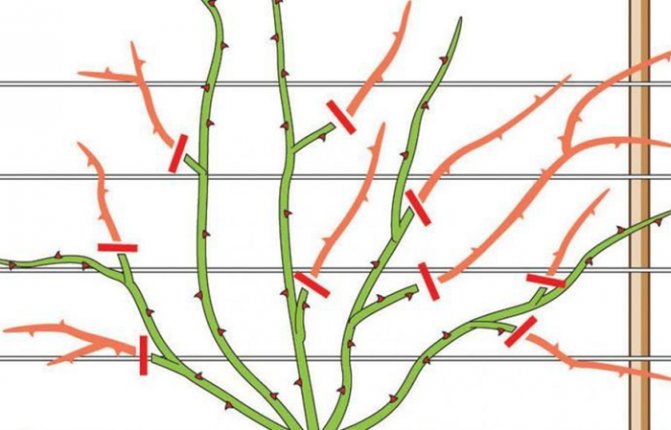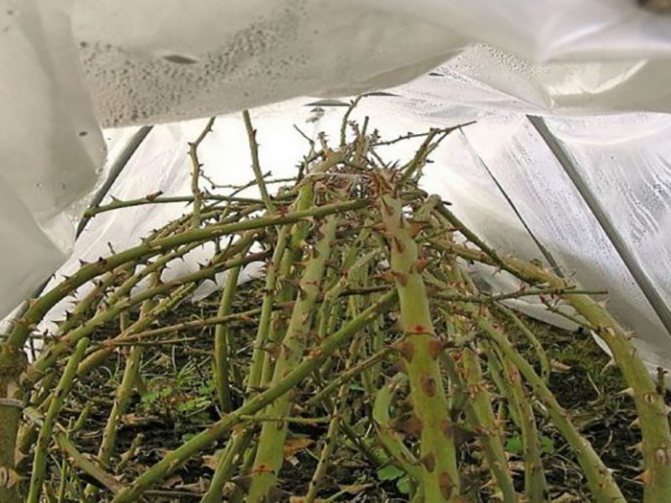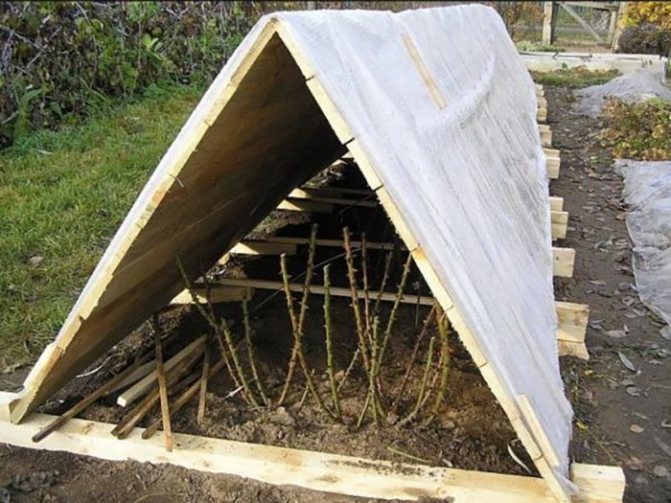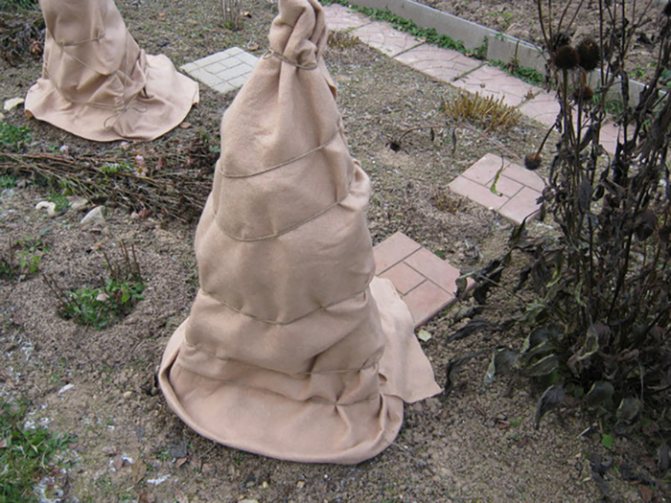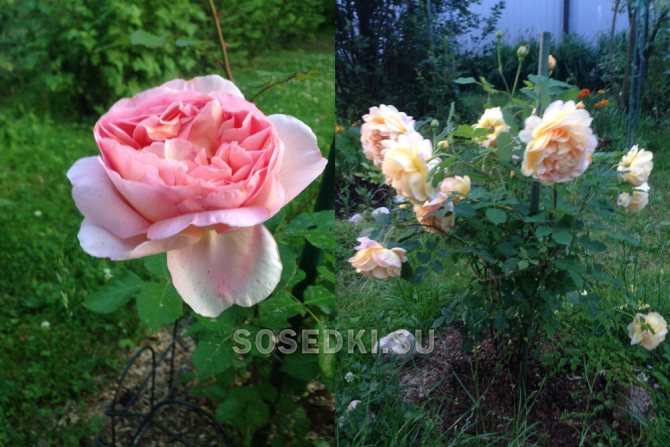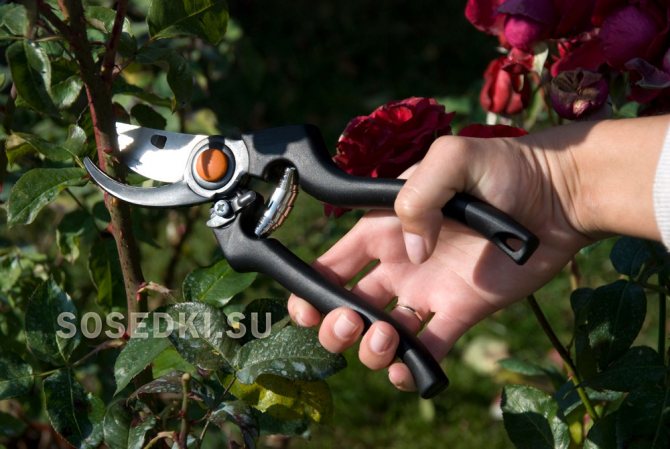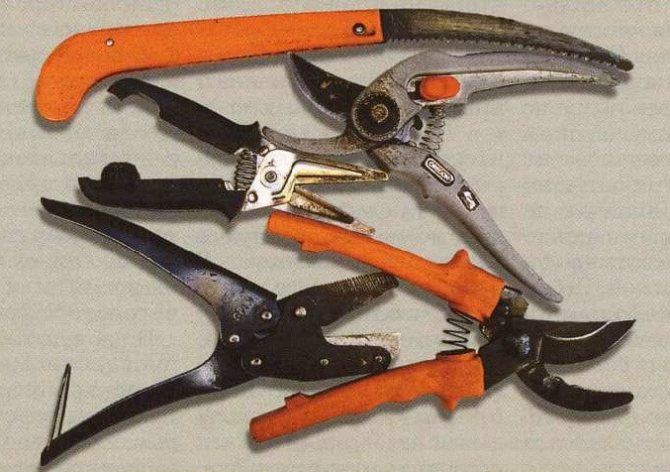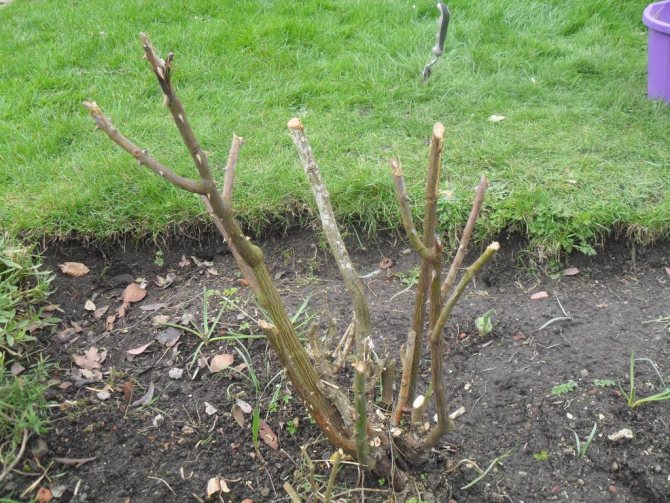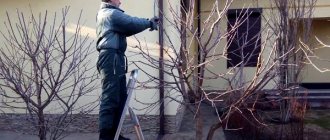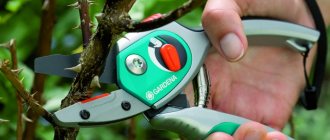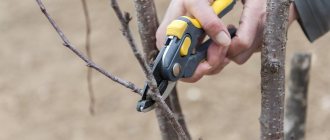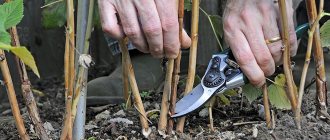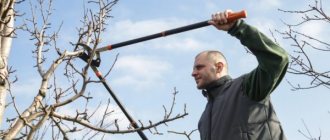Autumn trimming of rose bushes is a necessary operation that helps the plant to winter safely. Refusal from this procedure can lead to weakening and disease of the flower due to excessive thickening of the crown. This article describes the basic rules and methods for pruning roses in the fall for beginners for the winter. The approximate timing of the procedure in different climatic zones of our country is given.
Removing excess and weak branches of the rose will allow the plant to retain strength for active growth and flowering for the next year.
The need for pruning, its meaning
Many novice gardeners do not understand what pruning is for, when the plant is still completely insulated for the winter. Let's try to explain. With the onset of frost, the rose goes into sleep mode. The movement of sap in her tissues stops. The thaw triggers the awakening of the plant, which is immediately ready for growing again. Liquid nutrients begin to move inside the stems. When the temperature drops, the liquid freezes, tearing the tissues of the plant. Cracks are formed through which viruses, bacteria, roses penetrate, they can get sick and die.
To increase the frost resistance of the plant, the correct development of shoots and to eliminate the risk of fungal diseases, pruning is carried out. It increases the access of light, helps to rejuvenate the plant, and promotes abundant flowering. But different varieties of roses require different pruning, this must be taken into account when carrying out the procedure.
What are the roses. Varieties
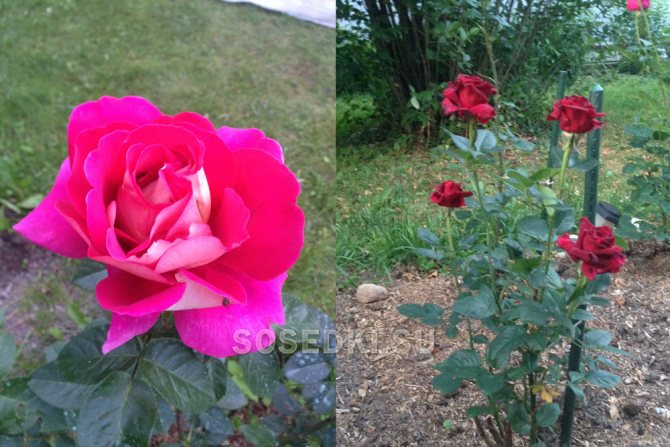
My roses 2020: Rose hybrid tea Shakira and Rose hybrid tea Black baccarat
You of course know that different varieties of roses are very different externally and in terms of growing conditions.
- The nobility among them are considered hybrid tea roses. Wonderful double flowers, amazing colors will satisfy the most sophisticated taste.
- But floribunda roses bloom profusely and have a great scent.
- BUT park bush roses differ in the variety and shape of flowers. These are the most unpretentious roses.
- I dream to plant standard rosesbut I hesitate. It seems to me that the hand of an experienced gardener is needed here.
By the way, read this article too:
What to do if the husband cheats and lies, but does not want to leave, says that he loves
Timing of pruning
Ornamental plants require proper care. A garden beauty requires a special approach, because a rose is a capricious plant. It is necessary to prepare it for wintering correctly, otherwise in the spring, instead of a varietal rose, you can see an unkempt rosehip bush on your site. And most importantly, pruning. At the first frost, when the temperature does not rise above -1 degrees at night, pruning should be started. For an important procedure, you need to choose a sunny day and prepare:
- Sharpened secateurs.
- Garden saw.
- Garden var or paint based on natural drying oil.
- Gloves.
Do not prune before the first frost. By pruning the shoots, we push the plant to form new shoots. Thaws will only contribute to this, and frost will destroy the entire plant. The autumn pruning process should take place when the plant is asleep.
Pruning tools
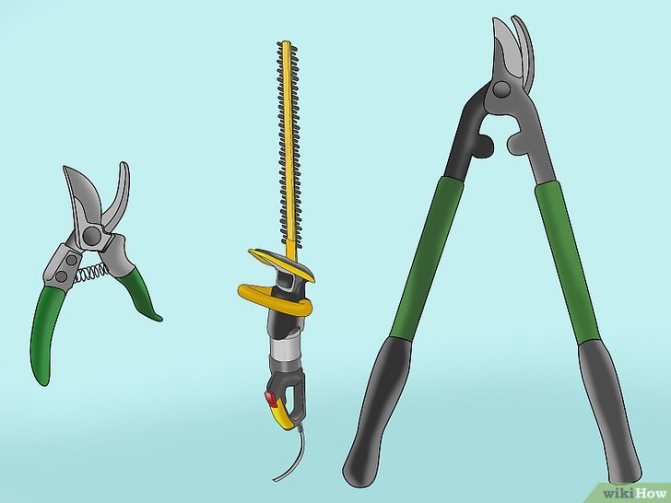

You can use the following tools for trimming:
- garden shears (they are convenient to use for pruning tall and climbing roses);
- a garden saw (it is used to cut shoots from 2 cm thick);
- secateurs (great for cutting thin shoots).
Important! All instruments must be disinfected. To do this, treat them with medical alcohol or a concentrated solution of potassium permanganate.
You will also need gloves, because cutting a prickly rose without them is very unpleasant and dangerous. It may be useful: a rug for knees or knee pads, a two-section ladder.
What shoots to cut
First of all, young shoots should be cut, they are least prepared for winter. If such shoots freeze, they cannot be reanimated. With the onset of spring, the shoots will begin to rot, bacteria and fungi will develop in them. This will lead to the death of the entire bush.
Experienced gardeners stop feeding plants with nitrogen fertilizers at the beginning of August. Top dressing with potash fertilizers from August to September promotes self-preparation of the plant for winter, the early ripening of young shoots.
Types of pruning rose bushes
There are three types of pruning rose bushes, each of which is applicable to certain types and varieties of roses.
- Short cut. This is the most radical degree of pruning and is used in extreme cases. The bush is cut to the base, leaving only two buds.
- Medium pruning. The most effective, it is carried out at a height of 35 cm. 5 kidneys are left.
- Long cut. This is the most insignificant species; up to 10 buds are left on the shoot. Only flowers are cut.
Having chosen the trimming option, you need to know that the cut needs to be done on the external kidney, stepping back a centimeter up from it. This is necessary so that in the future the bush is well ventilated and receives a sufficient amount of light. A sharp cut allows the water to drain off. We suggest that you familiarize yourself with the presented pruning scheme, they will help you clearly understand how it is carried out.
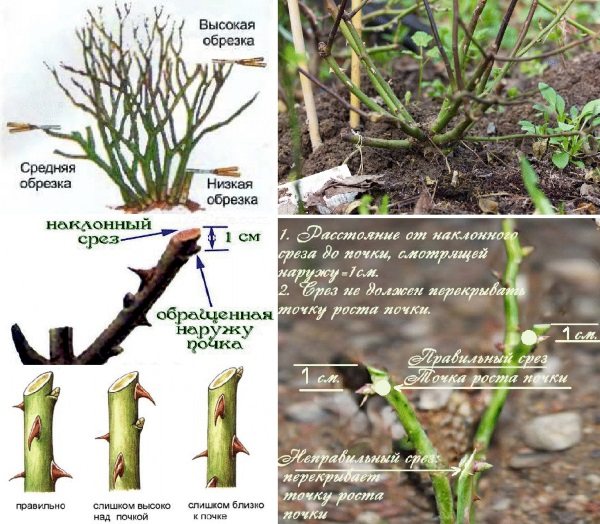

Types of rose pruning depending on the variety
In order to avoid mistakes, they first tear off all the foliage and remove small thin shoots, especially if they stick out from the ground. The second step is to remove unripe, old and dry shoots. Then, the bush is carefully examined and the appropriate pruning method is determined.
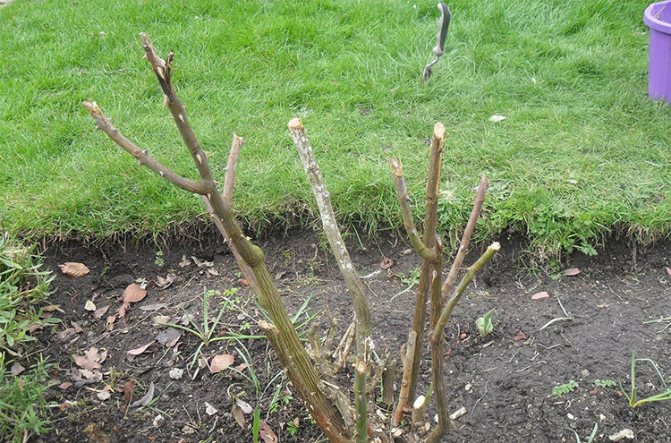

Pruned bush
Short cut
This is a last resort pruning because it negatively affects frost resistance. The shoot is cut off to almost 3-4 buds at the very base, so this procedure is usually carried out with strong tillering to thin the bush.
Medium cut
In this case, 5-6 buds are left from the base (about 35 cm), which in the spring causes the appearance of an abundant number of young shoots. However, English or park varieties cannot be pruned in this way.
Long cut
If, after shortening the shoot, long stems with ten buds remain, there is a long pruning. Such a slight shortening is used for Bengal, English and park roses, because they should bloom as early as possible.
The disadvantage of this method is that in a few years the bush completely loses its shape and decorativeness, since flowering also decreases.
Pruning different varieties of roses
Each variety of roses requires a different approach. You need to know which method is suitable for a particular rose variety. Let's consider in more detail so that it would be easier for novice rose growers to decide when carrying out preparatory work in the fall.
Hybrid tea varieties
Medium pruning is recommended for this variety. If the climate is harsh enough, for example, in the Urals, you can shorten the shoots more so that it is easier to cover them. These roses are distinguished by their exuberant growth, do not be afraid to cut off excess. A short cut will even benefit this strain.
In Crimea, additional insulation is not used for such roses, because the climate allows them to survive anyway. In the suburbs, it is necessary to carry out a short pruning and slightly close the bushes.
Park varieties
These varieties do not require global pruning.In the fall, it is necessary to cut off the formed fruits and faded flowers, young shoots that have not yet become stiff. If the bush is too large, you need to thin it out by cutting off small branches.
Climbing varieties
Pruning a climbing rose in the fall is also minimal. Fruits and flowers are cut. But this variety requires careful shelter for the winter. It is necessary to carefully remove the lashes from the supports, bend them to the ground, twist them into small bunches, and fix them. You cannot put them on bare ground, you will need to prepare more spruce branches, you can spread it out in a thick layer, and lay a roll of roses on top. They are covered with spruce branches from above, they will hold back the snow, which is a real salvation from winter frosts. This shelter can be used to protect roses in the harshest weather.
Ground cover roses
Groundcover, or creeping rose varieties, like curly ones, do not need strong pruning. But they need to be insulated no less than climbing ones.
English varieties
It is necessary to cut roses for the winter in the Moscow region, selecting all the shoots that have not had time to ripen. To thin out the bush, cut off all the small twigs. You can also cut 2-3 year old shoots. It is believed that each ring should hold up to 8 shoots.
Stamp roses
Traditionally, pruning of young shoots is carried out. The rest of the pruning depends on the grafted variety. It is better to pay attention not to this, but to the careful covering of these bushes. The shelter should reliably protect the bushes from the piercing winter wind.
All cuts must be treated with wood ash or garden varnish. This is not easy to do, especially if the pruning of the shoots was carried out on climbing roses. After pruning, rose bushes of any kind must be treated with a solution of iron or copper sulfate, potassium permanganate or Bordeaux liquid. Do not cover the roses right away if the weather is warm. The plant can vanish, being in a closed insulated space.
Shoots that were cut in the fall do not have to be thrown away. If they are of good quality, without damage, obtained from uninfected plants, you can use them as seedlings to expand the rose garden. To do this, you need to read our article on how to save cuttings for future planting.
Required tools
The first thing that is recommended to pay attention to is the purchase of special gloves. Regular rubber spikes will not work, as the spikes will easily pierce them and injure your hands. Therefore, you need to use tight, rubberized gloves.
When pruning a plant, you cannot do without a garden pruner. It is convenient for them to remove thin branches, shoots, faded buds. When buying an instrument, you need to choose one that will fit comfortably on your hand. In addition, his blade should not be thin so that thick branches cannot break it.
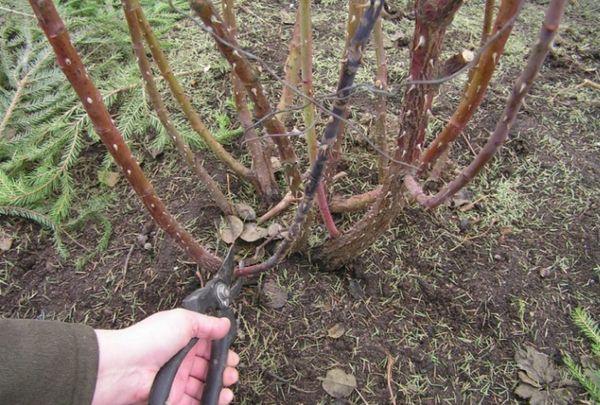

The next important tool is the long-handled pruner. It is quite easy for them to reach long branches that they cannot reach with their hands. There are different options for such a tool. Many pruning shears come with foam rubber handles for a comfortable grip. For pruning roses, such a tool is not suitable, as thorns will cling to the handles. It is recommended to choose pruning shears with plastic overlays.
For easy cutting of the thickest branches, a folding saw works well. It should have anti-rust treatment to avoid rusting.
See also
When is it better to transplant roses to another place, the rules and timing of the procedureRead
All instruments must meet the relevant requirements:
- lightweight and comfortable in the hand;
- the blade must be sharp enough, otherwise it can injure the branches;
- the blades at the end should be narrowed so that it is easy to reach hard-to-reach branches;
- the handle should not slip.
It is advisable to choose brightly colored instruments so that they can be easily and quickly found in the grass.
Before pruning, it is recommended to lubricate the tools with manganese solution or garden varnish. This must be done in order not to infect the rose with various infections.
October works in the rose garden
In addition to pruning in the fall, gardeners have a lot to do. It is necessary to protect the rose garden from possible infection, dry it, prepare the rose bushes for shelter, and with the onset of cold weather, carefully insulate them.
To protect the shoots from infection, the trunks are treated with garden paint or water-based copper oxychloride. This should be done at the bottom to the level of hilling (30 centimeters). If the shoots are damaged, they are also covered with a layer of paint. After the paint has dried, it is necessary to carry out a slight hilling.
The rose garden should not be allowed to be damp. Excessive moisture will not allow the capricious beauty to winter comfortably. If the autumn is damp, you need to arrange the drying of the bushes. High arcs should be installed above them, such as are used to form greenhouses. The film is stretched over them. The bushes are slightly bent down and placed in such houses.
In order to prevent diseases, it is necessary to spray. Despite the cold weather, pests and diseases continue to multiply and can harm a weakened plant. Leaves and twigs should be sprayed with a 1% solution of Bordeaux liquid.
On the site, in particular, under the rose bushes, there should be no fallen leaves and other plant debris. The compost pit should be located away from the rose garden. If it is, and it is well fenced off, rubbish can be dumped there. If there is no such pit, all plant debris is burned, this will prevent the spread of the disease, if there are infected shoots, it will not allow the larvae of insect pests to multiply.
Read also Funny poems about gardeners
How to properly cover roses? Competent warming of roses in the fall is a guarantee that next year they will again please with abundant flowering. It is necessary to take this with all responsibility, since this is the only way to save the beautiful roses. The wrong or frivolous approach can cause the death of the plant.
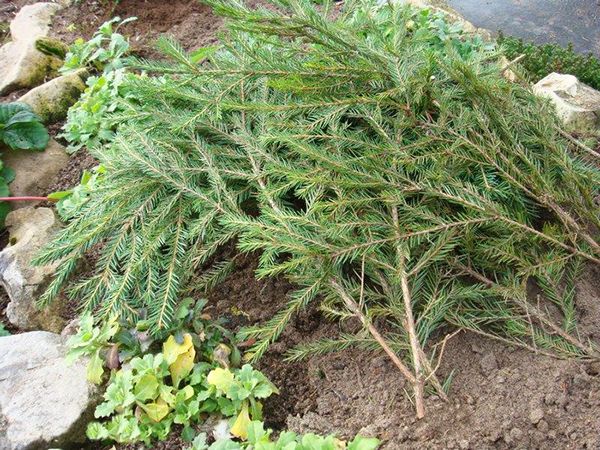

Diseases and pests of roses. Fighting them. Photo
I will tell you how I deal with pests and diseases on my site.
The main problem with my roses is aphid... Perhaps because a viburnum, a mock-orange grows on the site, which every year are affected by aphids, since these are large bushes, it is difficult to process them, and a hand does not rise to remove. Especially viburnum Buldenezh is an unusually beautiful shrub. So I am struggling with aphids and ants carrying it with all my might.
Aphids appear in mid-May and suck juices from young buds. I have to spray the roses with insecticides every two weeks. Folk remedies: spraying roses with soapy water, infusion of garlic did not work.
Last year, the treatment with ammonia helped me. 2 tablespoons of ammonia per 1 liter of warm water with the addition of 1 tablespoon of feri. I dilute the solution in 8 liters of water and spray the rose bushes. But it is best to use broad-spectrum insecticides, such as Aktara, Inta-Vir, Fitoverm.
In the second half of summer, on my roses appears black spot.
Black spot —
it is a fungal disease caused by the fungus marsonin. Brown and black spots appear on the leaves of the plant, the bushes lose their foliage.
With a strong infection, the bushes become bare, and the plant may die. The mushroom hibernates on plant debris, fallen leaves and rose stems. In the spring, when the temperature rises to 10 degrees, the fungus begins to develop. When warm and humid weather sets in, the spores of the fungus mature. Dispersion of spores continues for forty days. Therefore, the signs of the disease do not appear immediately. Depending on the weather conditions and the resistance of the roses, the disease may appear earlier or later.
A set of measures is needed to combat black spot. Not only spraying with fungicides is important, but it is necessary to increase the plant's immunity. To do this, I treat plants with immunostimulating drugs, such as zircon, cytovite. Throughout the season, I harvest the affected leaves, preventing the spread of the disease. In no case should the leaves be composted, but only burned.
- I start fighting the disease in september... I collect and burn all the foliage under the roses. I spray the earth and bush with a solution of ferrous sulfate.
- In early spring I process the bush and the soil under the bush again with a solution of ferrous sulfate.
- In the beginning of May three times every 10 days, for the first time, when the buds burst, then the first leaves appear and when the leaves bloom, I treat with fungicides such as chorus, which works at low temperatures, topaz, scor or strobe.
- In June I carry out foliar spraying with zircon to increase immunity. The leaf plate is compacted and becomes more resistant to disease.
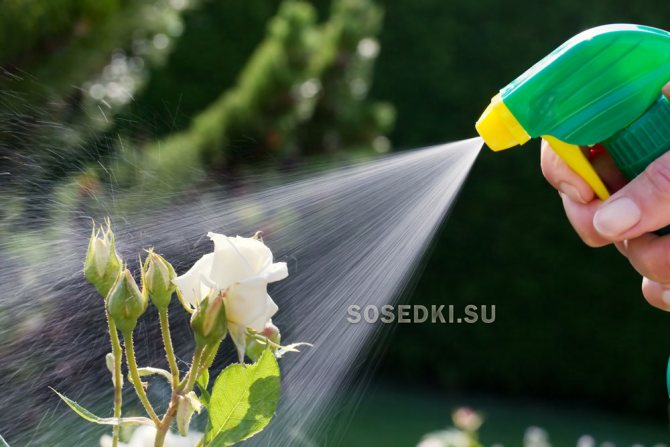

Rose experts advise planting marigolds near roses.
- BUT in July, August I carry out prophylaxis with phytosporin on a leaf every two weeks. But if the disease progresses, then I already use drugs of systemic action, such as ridomil gold, which works from the inside, fast, strobe every 10 days. It is advisable to change drugs so that there is no addiction. Unfortunately, this disease does not go away quickly.
Thank God, I have no other pests and diseases. Perhaps because the neighbors have a solid lawn.
Stages of warming roses for the winter
Cleaning of all leaves. It is necessary to cut off all the leaves from the shoots. Although some gardeners believe that this is not necessary. But scientists have proven that the absence of leaves is a guarantee that fungal diseases will not infect the plant.
Digging the soil. You should work very carefully so as not to damage the roots. It is better to use a pitchfork instead of a shovel for this operation. With very long shoots, you should dig a bush on one side, then it will lie down.
Hilling. Hilling bushes is carried out on a sunny day to keep the soil dry. To create a mound, you can take crushed dry peat or sand. Dry loose earth is also suitable. The insulation height must be at least 15 centimeters. Floribunda rose and hybrid tea varieties are completely covered with earth. Such insulation will reliably protect the kidneys from severe frosts.
An important point: it should be remembered that untimely, like too early shelter of roses, can play a bad joke, destroying the plant. It is necessary to be guided by the weather conditions. It is good if you manage to keep the plants at a slight minus temperature of -3 ... -5 degrees. This will allow the plant to harden, naturally go into hibernation, stopping the growing season. If the temperature stays within 8-10 degrees for several days, it's time to cover the bushes. Roses grafted onto the rosehip root are able to withstand lower temperatures when grown in the suburbs. But self-rooted roses of some thermophilic varieties can die already with the first frost. It is necessary to cover the climbing plants by mid-October.
The best materials for sheltering roses are: foliage, spruce branches of conifers, burlap, cardboard, agrofibre. Capital shelters are made of boards, wooden slats, metal arcs. Covering material is pulled and fixed on them, preventing it from rising. It is necessary to fix everything to the ground, sprinkling with soil or stones. You need to make sure that the structure does not collapse on the bushes in the winter under strong gusts of wind or a layer of snow.
Using these simple rules for preparing a shrub for winter, it will be possible to carry out all the work without any particular difficulties.High-quality preparation of roses for the winter season is the key to good growth, development and rapid flowering during the next growing season. As you have noticed, the rose grower has a lot to do in the fall, but they are worth enjoying the most beautiful double flowers of Her Majesty Rose all summer and autumn.
Modern varieties of roses bloom for a long time. And this is undoubtedly a plus. However, the plants are unprepared for winter. Their shoots and leaves turn green, flowers bloom. It is important not only to organize the wintering of plants, but also to properly prepare roses for winter, especially in the Moscow region, where frosts are interspersed with thaws.
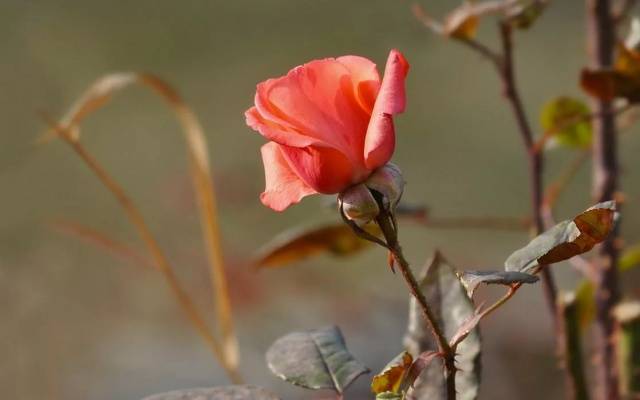

With the onset of subzero temperatures, sap flow in plant tissues ceases, roses go into hibernation. However, when a thaw sets in in the Moscow region, the plants are again ready for growing season, nutrients in dissolved form begin to move in them again, which freeze as the temperature drops below 0 ° C, tearing the plant tissue. Bacteria and viruses penetrate through wounds, roses get sick and can die.
Why do you need pruning?
Ensuring a long and healthy plant life is the goal of every gardener. If in spring pruning is needed to form a bush, then in autumn this process makes the bush stronger and prolongs its youth.
It is especially important to organize wintering of plants in cool regions, otherwise they will not survive the winter. Many varieties cannot go dormant on their own. When the temperature drops, they fall asleep, and the degrees rise slightly - they resume the movement of sap, which forms cracks filled with ice on the branches and roots.
In addition, the pruning of the bush is performed for the following purposes:
- the bush begins to grow faster;
- the development of strong young shoots is stimulated;
- a large number of strong kidneys appear;
- the risk of contracting diseases decreases;
- rhizome develops better;
- the trimmed bush is conveniently prepared for winter;
- accumulate nutrients.
Those roses that were left without cutting are more at risk of freezing. And the shoots left for the winter successfully rot.
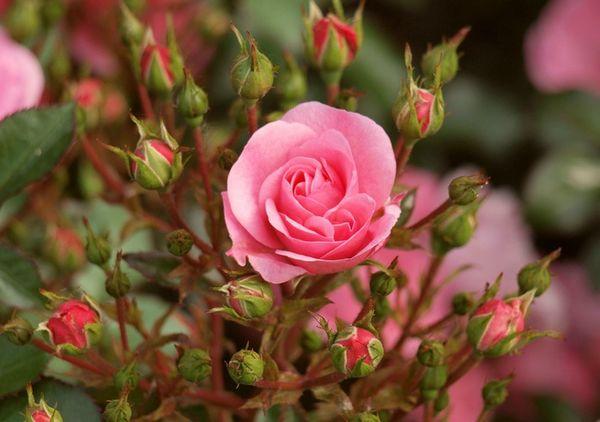

Preparing roses for winter in the suburbs
Preparation of roses for winter in the Moscow region begins in the summer. They change the qualitative composition of fertilizers, stop adding nitrogen, which contributes to the growth of shoots and foliage, and increase the amount of potassium and phosphorus in top dressing. So roses will strengthen the root system, and those shoots that have managed to grow back will be able to ripen. Options for feeding roses in preparation for winter in the Moscow region:
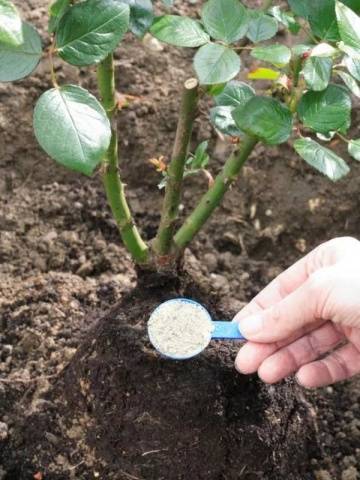

- In mid-August, potassium monophosphate and potassium superphosphate (15 g each) are added, dissolving in 10 liters of water. If it is rainy autumn, then it is better to apply fertilizers in granular form under the plants. After a month, feeding is repeated;
- 1 tbsp. l. calcium nitrate diluted in 10 liters of water;
- A valuable nutritious fertilizer rich in potassium - banana skins. They are brought under a bush, embedded in the soil, pre-chopped. Or brew like tea, if dry banana skins are available;
- Wood ash - 1 tbsp. scattered in the near-trunk circle of roses in a dry form, if there are frequent rains, when it is dry autumn, then it is better to prepare an ash solution (1 tbsp. wood ash / 5 l of water).
Top dressing of rose bushes in the Moscow region with a predominance of phosphorus and potassium is carried out twice, with a break of a month. Roses take foliar dressing very well, then the nutrients are absorbed in full. A solution for foliar spraying of roses is prepared by reducing the dose by 3 times.


With the onset of autumn, in the Moscow region, they cease to loosen the soil around the roses. This is done so as not to cause the growth of new shoots from the replacement buds and new thin roots. In the third decade of September, the growing point is pinched off the shoots of roses, small buds are removed, and those that have faded are allowed to ripen.
Another important agricultural technique is the autumn pruning of roses.It makes it possible not only to facilitate the sheltering of roses in the Moscow region for the winter, but also to sanitize the rose bush, its formation, to lay the foundation for future shoot formation, and, consequently, flowering.
Pruning of plants in the Moscow region is carried out in the fall, shortly before the roses are sheltered for the winter. Roughly late October - early November. It is worth making an allowance for the peculiarities of the climate in the regions of the Moscow region. There are no exact dates for pruning, you should wait until a constant slight minus to -5 ° С is established.


In the fall, cut off damaged leaves and shoots, broken, deformed, with signs of disease. Also remove the flowers of the plant, dried and still flowering, unripe shoots. A sign of the maturity of a rose shoot is a light core. Several test cuts can be made to ensure that the shoot is mature.
The question of removing foliage is controversial, many gardeners will not remove foliage, since this is a rather large amount of work when there are more than a dozen rose bushes in stock. They conclude, based on many years of experience, that nothing bad happened with roses over the winter. Another opinion is that foliage should still be removed, as it can cause decay of the bush.
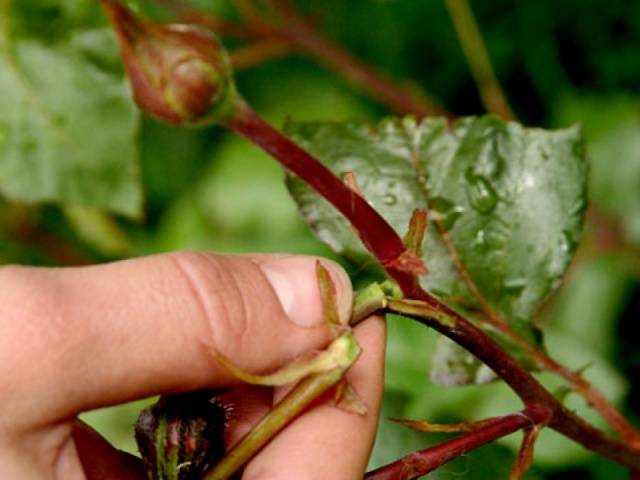

Young, freshly planted plants and bushes that have been growing for many years are pruned. Gardening tools: A hacksaw and pruning shears should be sharp and treated with an antiseptic. Prune roses in good clear weather. The type of pruning depends on the type of roses:
- Short pruning - 2-3 buds remain on the shoot;
- Average pruning - 5-7 buds;
- Long pruning - 8-10 buds.
After pruning, all plant residues must be removed from under the bush, and even better burned, especially if there were signs of disease in the rose bushes.
Cut rose bushes are treated with a solution of copper sulfate, iron sulfate, Bordeaux liquid or potassium permanganate. If the weather is warm, then the plant continues growing, even in the absence of leaves. Therefore, do not cover roses too early, in a confined space the plant may die, dry out.
Untimely shelter can cost the life of plants, the question of when to shelter roses for the winter in the Moscow region is extremely important. Focus on the weather conditions in the region. Well, if it is possible to withstand rose bushes at a temperature of -3 ° C, the plants will finally stop vegetative processes and go into a state of hibernation. At a temperature of -7 ° C-10 ° C, the roses should be covered. Roses grafted on the roots from rose hips can also withstand lower temperatures in the Moscow region, while self-rooted roses are afraid of the first frost and can die already at a temperature of -3 ° C.
Read also How to make marinade for chicken wings


To hide roses in the Moscow region, spruce branches, foliage, cardboard, burlap, agrofibre and film are used. More complex shelters are made from arcs or boards, over which some covering material is pulled. All elements of the shelter for the winter are securely fastened so that they do not collapse under the thickness of snow and are not torn off by strong gusts of wind.
Watch a video on how to prepare roses for winter:
Planting roses in the fall in the suburbs
Planting roses in the Moscow region can be carried out both in spring and autumn. The fall planting has even more advantages than the spring planting. In the Moscow region, there is more high-quality planting material in the fall. Young plants have time to get stronger, to build up the root mass, and in the spring, having increased the greenery, they will begin to bloom no worse than the old bushes.
In the Moscow region, it is better to plant roses at a temperature of + 13 ° С + 15 ° С. These temperatures occur in mid-September - mid-October. Before the onset of cold weather in the Moscow region, the seedlings have time to adapt, take root and successfully endure the winter period.
For planting, choose a well-drained area that will be well lit by the sun. The passage of air masses should be taken into account, roses do not like drafts.
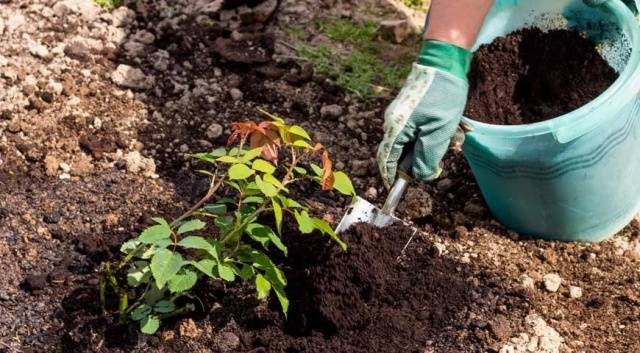

Plants prefer highly fertile and well-drained soils. If there are sandstones on the site, they should be diluted with clay, while a clay layer of 5 cm is laid on the bottom of the planting pit.If the soils are clay, then their composition is improved by adding gravel and river sand. A layer of broken brick or gravel for drainage is laid at the bottom of the pit.
Distance when growing roses: 0.7 m between bushes and at least 1.5 m between rows. A planting hole is dug in a large volume, it will have to contain food for the rose for several years in advance. The depth of the pit is not less than 0.5-0.7 m, the dimensions are 0.4x0.4 m. Peat, humus, compost are taken abundantly, mixed with the existing soil 1x1 and placed in the pit. It is better to prepare the soil for roses in 2-3 weeks so that the soil settles and does not have air voids.
Before planting the plants, the soil is loosened again and a mound is formed on which the root system is placed, carefully straightening all the roots. This is done if the seedling was purchased with an open root system. Before planting, you should shorten the roots to the size of the planting hole, at the same time checking them.
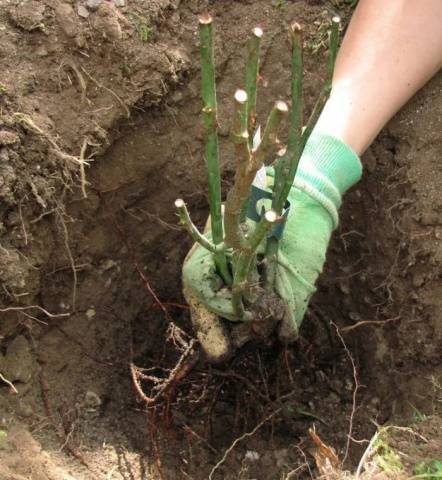

If your seedling is purchased in a container, then it is taken out together with an earthen lump and placed in a hole so that after falling asleep with an earthy mixture, the root collar is slightly deepened, by about 5 cm. The soil around the plant is thoroughly crushed. And watered abundantly.
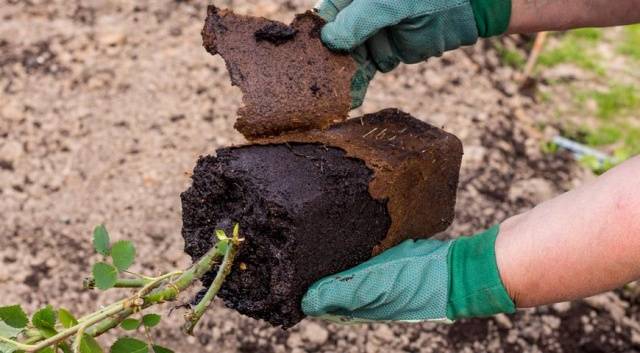

In order for a young rose to winter well in the Moscow region, it is necessary to cut the bushes with the onset of the first frosts in early October, removing the inflorescences, buds, dried shoots and unripe shoots, as well as all the foliage. Cover completely with soil, peat or compost.
Then organize a shelter, just like for adult roses in the Moscow region. Using arches or wooden shelters. Or install a support around the bush, on which to strengthen the cardboard or mesh, and fill the foliage or spruce branches inside. Plastic or wooden boxes can be used to protect the plants from the cold. Usually, this kind of shelter is enough to keep roses in the Moscow region in cold winters.


How to plant roses
How to plant closed-root roses
Firstly, in the conditions of the Moscow region, it is necessary to make a choice in favor of grafted roses, as they are more winter-hardy. And it is best to take roses with a closed root system. They can be planted even in summer, as I once did when I bought a rose I liked in a terrible heat. But it got accustomed! True, I watered the bush every evening. But in order not to worry, it is better to plant roses on time. Better in autumn in September-October or in spring from mid-April to late May.
- Before planting, I lower the container with the rose in a bucket with Kornevin's solution for 2-3 hours. (A bag of Kornevin 10 grams per 7 liters of water) or I take out the rose with a lump from the container and dust it with Kornevin. Or Epin or another root former.
- I plant roses, like most, spontaneously, as soon as I buy a copy I like. Therefore, I dig the planting hole just before planting the rose.
- The size of the pit is about 60 * 60 * 50, but not less than with an allowance of 10 cm on each side of the coma. At the bottom of the pit I pour granular fertilizer for prolonged-release roses (half a glass). I add compost, sand, a glass of ash and half a glass of fertilizer for roses or double superphosphate to the soil. I mix everything thoroughly and fill the planting pit with layer-by-layer compaction so that after watering the earth does not settle too much.
- After filling the hole, I make a depression so that after planting the rose, the grafting site is 3-5 cm below the edge of the pit. The grafting site is easy to see - this is a thickening at the base of the rose. There is a controversy over whether or not it is necessary to deepen the vaccination site. I believe that it is imperative to deepen. Otherwise, the vaccination site stiffens, dries up and new shoots do not form. Ultimately, shoots begin to grow below the grafting site, and the rose is reborn into a rose hip.
Rosehip must be removed.
How to tell if a rose hip is growing? The rose has new pinkish shoots, the leaves are dense and glossy, and the rose hips are like paper. There is an opinion that a rose hip has 7 leaves on a branch, and a rose has five. But this is not so, there are also roses with seven leaves.
- Pour the soaking solution into the hole. I fill the hole with the remaining fertile mixture. After planting, I water the seedling with a bucket of water and mulch so that a crust does not form.
- I water the planted roses abundantly for several days in the evenings so that the wet foliage does not burn in the sun. I do not fertilize the newly planted roses until next year, only once every two weeks I water it with nettle infusion. Maybe they will tell me that this should not be done, since we have filled the planting hole with all the necessary fertilizers. But I think it won't get any worse.
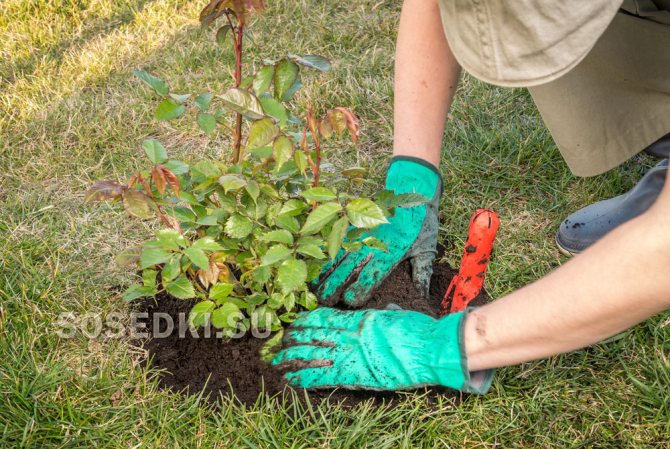

By the way, read this article too
How to choose a perfume for yourself 9 rules for choosing your scent
Nettle infusion for plant nutrition. Application
I think that everyone knows how to cook nettle infusion, but for new beginners, I'll tell you.
- I fill a bucket with nettles, fill it with cold water, add a glass of ash and leave for a week.
- Then I breed it in a ratio of 1:10 and water the plant under the root, trying not to get on the trunk.
- Better to make a groove around the rose and pour the solution there.
- I pour four liters onto the bush.
- It is possible with this solution, only diluting 1:20 and filtering, spray the bush over the leaves. This makes the leaf plate stiffer and therefore more resistant to disease.
All experienced gardeners remove flowers on a newly planted rose in the first half of summer. This allows the rose, without wasting energy on flowering, to give new shoots. But I always feel sorry for cutting off the flowers. After all, you buy a rose with the flowers you like, and then cut them off mercilessly. I don't have a plantation, you rejoice in every flower.
The first stage is over, but this is only the beginning. It takes a lot of effort to grow a real queen of flowers.
By the way, read this article too
How to quickly forget a loved one and not think about him? Why can't I forget my ex?
Should roses be pruned in autumn?


Regardless of when the roses were planted, in the fall the bush needs cleaning before sheltering for the winter. The plant undergoes rejuvenating pruning, unripe and diseased shoots are necessarily removed, thus, the flowers are prepared for winter, helping to accumulate and preserve nutrients for active growth in spring.
What are the benefits of pruning roses in autumn? Its advantages include:
- the accumulation of nutrients to plants that provide intensive growth in spring;
- enhanced development of the root system;
- providing protection against fungal and infectious diseases;
- cut bushes are easier to cover for the winter;
- laying more flower buds and new shoots.
Autumn pruning will have no drawbacks if it is carried out at the right time, without awakening dormant buds. For the procedure, you should choose a dry, clear day. If you do everything right, your favorite roses will bloom in the summer.
Why pruning is done
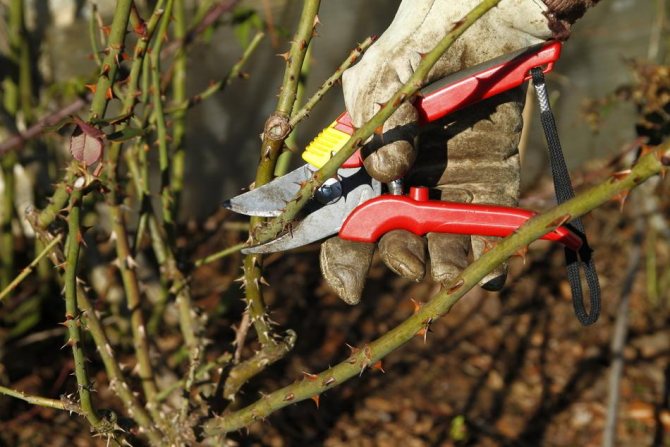

Autumn pruning of roses
Each rose cut serves a purpose. So, by shortening the shoots in the spring, they care more about the appearance of the flowers. At this time, broken and frozen branches that died in winter are removed. Spring work is aimed at shaping the bush, giving it decorative qualities. The gardener here is more like a barber doing haircuts.
Autumn pruning is carried out to prepare the flower for the winter period, but not only. These are also preventive measures, the guarantee of the future health of the rose bush. Pruning in autumn brings less stress to the plant, and over the long winter it has time to recover from injuries and prepare for the new growing season. As a result of the removal of part of the shoots, the flower:
- begins to strengthen the root system;
- releases more flower buds;
- grows young shoots more abundantly;
- gets rid of insect pests, strengthens the immune system;
- stocks up nutrients for the next flowering season.
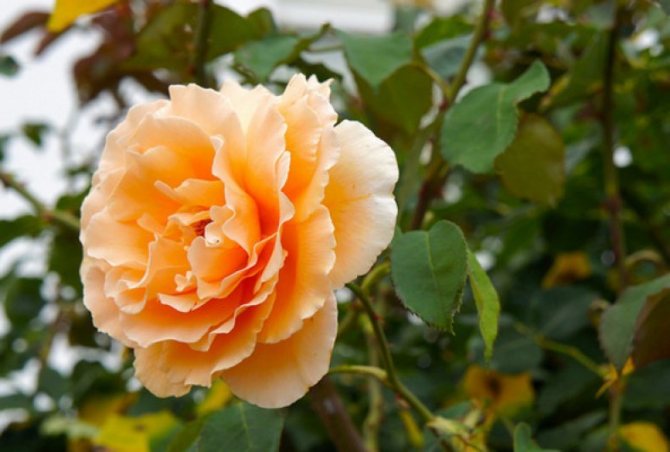

Park rose bud
Of course, you can leave the rose bushes alone and not prune. But this applies only to some species. For example, a park rose is left as it is. They are distinguished by early and abundant flowering, as well as the ability to endure the winter cold. In October, dried flowers and buds, weak underdeveloped shoots, as well as part of the branches are removed from such bushes in order to prevent the varieties from thickening and running wild.
Do not shorten the stems of miniature roses, the height of which often does not exceed 15–20 cm, although there are also larger varieties.
For the winter, flowers are covered with available materials. Also does not require pruning and the rose is wrinkled.
But there are also such types of roses that, without shortening the stems, can poorly endure the winter cold. And an incorrectly performed procedure can provoke the death of the entire plant.
When is the best time to prune - in spring or autumn
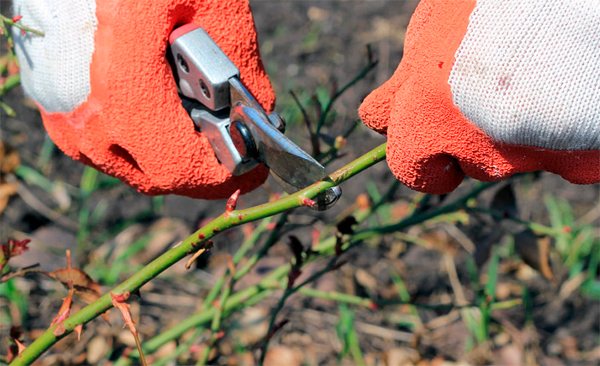

Not everyone knows which pruning for roses is more useful - spring or autumn. To put the question like that is not entirely correct. Shoots can be shortened in spring and autumn, but this event will have different goals. If corrective pruning is carried out in the fall, then in the spring it can be called the main one. The procedure should be started immediately after the snow melts. It is important to carry out the work before the start of the movement of juices.
The bush must be examined to determine which shoots are to be removed. The branches that have died during the winter are cut to the ground. A section of healthy tissue should appear on the cut, if the wood is black, it means that you need to do a cardinal pruning, removing all dead branches. Healthy stems only need to be shortened slightly.
Following this, shoots growing inward are removed. It is important to do this before the start of the growing season, otherwise the bush will then become too thick, air exchange will deteriorate, which can provoke fungal diseases. Crooked and intertwined shoots also need to be removed, they still will not give a beautiful flowering. Shrub roses are given a wide, open shape with an empty middle.
Plants trimmed in this way will receive maximum sunlight and rain moisture. Freshly planted roses are also pruned in spring. In this case, no more than 4 buds are left on each shoot. Radical pruning is also used if the bush is almost completely frozen out, affected by pests, or requires rejuvenation.
When to trim


Autumn pruning of roses is carried out just before the shelter for the winter. This procedure should be carried out from the second decade of October to mid-November. The exact timing of the pruning of shoots depends on the weather and the specific region. As soon as night temperatures are below freezing for several days in a row, you can grab the pruner. By the way, the tool for pruning roses should be very sharp; experienced summer residents prefer a knife so as not to crush the wood fibers.
In the suburbs, the middle lane
At the very beginning of autumn, the soil around the roses in the Moscow region ceases to loosen, preparing the plants for a dormant period. Towards the end of September, you will need to pinch the tops of the shoots, and also remove the ripening buds. The main pruning should be done much later. Most often it is carried out in early November, when at night the air temperature begins to drop to -5 degrees.
Some doubt whether it is necessary to leave leaves on the shoots or it is better to cut them off. If there are a dozen or more rose bushes on the site, such a procedure will be problematic and take a long time, so many leave foliage on the branches. In the event that you have a few roses, the leaves can be torn off, as they increase the risk of decay and diseases of the bush.
In the Urals, in Siberia


In the Urals and Siberia, spring comes late, and in winter there can be 40-degree frosts, so in these regions it is better to grow zoned varieties of roses.Preference should be given to planting varieties grafted on rose hips. Such plants have strong immunity, they freeze less often and get sick less.
Read also What is the difference between larch and spruce
Canadian roses tolerate the Ural climate well. When pruning branches at the end of summer, you should not do too short pruning - this can provoke the growth of new shoots that do not have time to ripen before winter.
In the last days of summer, the upper leaves are cut off to prevent the development of fungal diseases, and the lower ones are left for photosynthesis. The second stage of preparatory work is carried out in the first decade of October. The stems of roses are shortened to a height of 50 cm, only climbing varieties are not pruned. The bushes should be sheltered in the winter after the final onset of frost.
In the Leningrad region
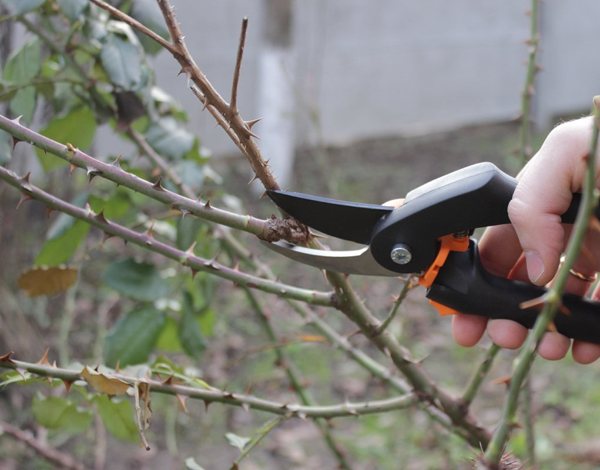

Autumn in Leningrad is usually windy and rainy. Choose a dry and clear day for pruning roses. You need to try to make the cuts smooth and even, then there is less chance of infection or moisture getting inside. Persistent subzero temperatures in this region come in mid-October - at this time, pruning should be done. Soon thereafter, the roses are covered with any breathable material.
Basic rules for pruning
During the winter, no more than 7 shoots are usually left on the bush. The procedure for removing and shortening the stems begins when a stable temperature outside of about -2 degrees is reached. In the middle lane, this is the end of October - beginning of November.


Pruning tools
The main tool for thinning shrubs is a garden pruner, but experienced gardeners also use a sharp knife. You may need a hacksaw to cut thick branches that are more than 2.5 cm in diameter.
Preparing for pruning
By the end of September:
- They stop watering and loosening the soil under the roses to slow down the growth of shoots.
- Do not allow late buds to bloom by pinching them.
- If there are heavy rains over the rose garden, the canopy is stretched.
- The bushes are piled up to a height of 10-20 cm.
How to properly prune roses for beginners
Given the number of varietal varieties of roses, it is not surprising that a beginner can get confused when starting pruning. Indeed, each variety has its own rules for shortening shoots. One might ask: why do roses need pruning at all? Why not give nature the right to form this beautiful plant itself.
However, it happens that over the years, the tops of the shoots die off, and shoots, directed in different directions, begin to grow chaotically from the lower buds. The bush may become diseased and look messy and disheveled. It is permissible not to cut only specific roses, with representatives of varieties the situation is completely different.
Bush


Due to the correct formation, some varieties of bush growth are able to bloom several times per season. In order for the plant to remain strong and healthy, it needs competent autumn pruning. If it is not carried out, the bush will weaken over the winter and will not give abundant flowering. First, dry and old shoots that are more than 3 years old are cut off at an angle of 45 degrees.
Then, soft, unripe branches are removed, which will still die during the winter. At the last stage, cut off the shoots directed inside the bush, unopened buds, flowers and leaves. The cut must be done, retreating from the outer bud by 1 cm. The pruning rules are the same for both adults and young spray roses.
Tea-hybrid
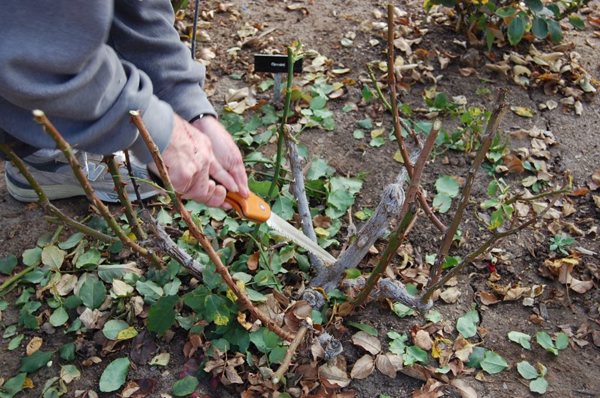

Hybrid tea roses are most popular with gardeners. From their ancestors, they got resistance to temperature extremes and the ability to form large buds of very different colors. Many varieties are convenient for cutting, as they give a single large flower at the end of the shoot.
Hybrid tea roses bloom from mid-June to early October. Autumn pruning of these varieties should be low to medium. Shoots can be shortened by half.Hybrid tea roses do not tolerate wintering very well and they need a margin of stem length. If the upper part of the shoots freezes or is damaged by a disease, they are additionally shortened in the spring.
Climbing


Climbing roses grown in Russia are of two types. They are subdivided into ramblers (curly type) and clamber (profusely blooming large-flowered roses with good winter hardiness). Each of these varieties has a different pruning method. The scheme for shortening shoots also depends on their number and length.
Large-flowered varieties form the bulk of flower buds on the crown of the shoots; when they are cut off, the third part of all lashes is cut off. Each branch should have no more than 10 buds. In climbing roses, only old and diseased shoots are cut.
How to cut climbing roses: video
Groundcover
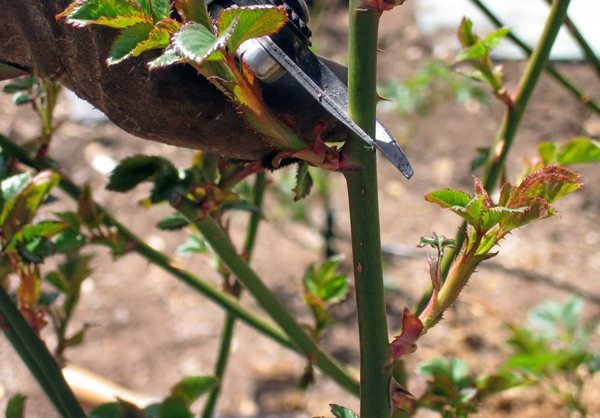

Many gardeners grow ground cover roses without pruning. Nevertheless, this technique helps to maintain a harmonious bush shape and has a positive effect on the quality of flowering, so you should not give it up. In autumn, at the end of the first growing season, all flowering shoots are cut out from these roses, leaving only the young shoots that have grown in the current year. In this case, diseased and weak branches are cut off completely, and healthy ones are shortened. Lateral shoots are pruned to a height of 10-15 cm from the base.
In the second year, the flowering lateral lashes are removed, pinned to the ground, and the shoots of this year take their place. They are carefully killed in the ground and pinned. After that, the fixed branches are shortened by 2-3 buds. All subsequent years do the same.
Floribundu
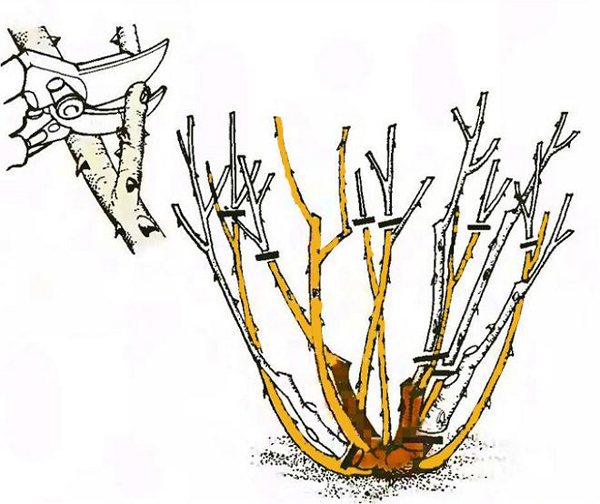

Floribunda roses are more powerful plants than hybrid tea and remontant varieties. Correct pruning is very important for them. Pruning the shoots too much can weaken the plant so much that it will stop blooming for several years. But even a weak pruning of this rose will not do her good. After it, the growth will be so weak that it will not be able to survive in the winter.
Formative pruning of roses of this group is carried out in the spring and should be combined. Old shoots need to be drastically shortened, and young ones only slightly. In summer, it is recommended to pinch the tops of the shoots in floribunda, and in the fall after flowering, to cut out all non-flowering and immature shoots.
Park
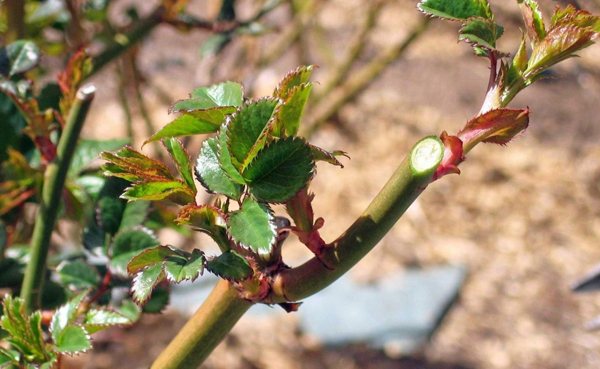

According to experienced flower growers, strong autumn pruning is not good for park roses. For the period remaining until winter, nutrients are redistributed from the shoots to the root system of the plant, which will make it possible to obtain abundant high-quality flowering in the next season.
An exception is made only for immature shoots, which are easily distinguishable by their appearance. These twigs are too soft and reddish in color. In the spring, before the buds awaken, sanitary and formative pruning is carried out, the lateral faded branches are cut off, and the young growth is shortened by 1/3.
How to cut roses for the winter: video
When is the best time to prune a bush?
It is clear that the best season for pruning a rose is autumn. But the period and the exact date must be selected in accordance with the lunar calendar. In general, experienced gardeners find it best to prune roses at the end of October and only during the waning phase.
Tip: It is believed that you do not need to prune climbing roses in the fall. It is enough just to bend the growth points to the ground and shelter from the cold.
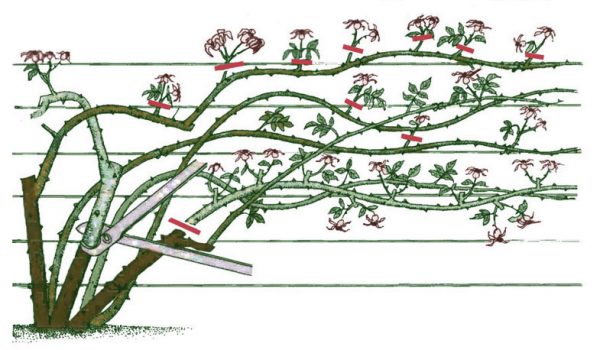

Only faded buds are cut off and branches are formed
Care after pruning


After the pruning is done, the sections must be covered with wood ash so that pathogenic microorganisms do not penetrate into the shoots. In 2 weeks, when the plants come to their senses, it will be necessary to carry out the last feeding in the current season, because during the flowering, the roses gave a lot of energy and they need to replenish the supply of nutrients. During this period, plants need phosphorus and potassium, but nitrogen is contraindicated. The granules are scattered under the root of each bush.
There is no need to water the roses, the last watering is done at the end of September. The lack of moisture is designed to reduce the activity of biological processes in the plant. The shrub will begin to hibernate smoothly and prepare for wintering. In a rainy autumn, it is recommended to build a special shelter for roses from excess moisture. Above the bushes, you will need to stretch the film, and make small grooves around them for the outflow of water.
It is recommended to clean the soil around the roses regularly so that fallen leaves and plant debris do not infect the stems and root system of the plant with any disease.
Pruning technique
How to trim the shoot correctly? To start the procedure, in addition to the secateurs, it is necessary to prepare: garden pitch, tight gloves to protect hands from thorns, a solution of pink potassium permanganate for disinfecting the tool. Fundamental rules:
- the cut is made 1-1.5 cm above the kidney at an angle of 45 degrees;
- the cut is done in one motion, without burrs;
- do not cut over the bud looking into the bush.
Attention!
Stems that grow in the future from a bud looking outward of the bush will create a beautiful bowl-shaped shape in which the shoots will not interfere with each other.
The cut from the cut must be immediately covered with garden varnish in order to avoid the occurrence of infection and decay of the bush. After pruning, not only unnecessary branches are removed, but also fallen leaves and other debris near rose bushes, which can be used by pests for wintering. After the pruning procedure, not only plants are treated with fungicides, but also the ground under them.
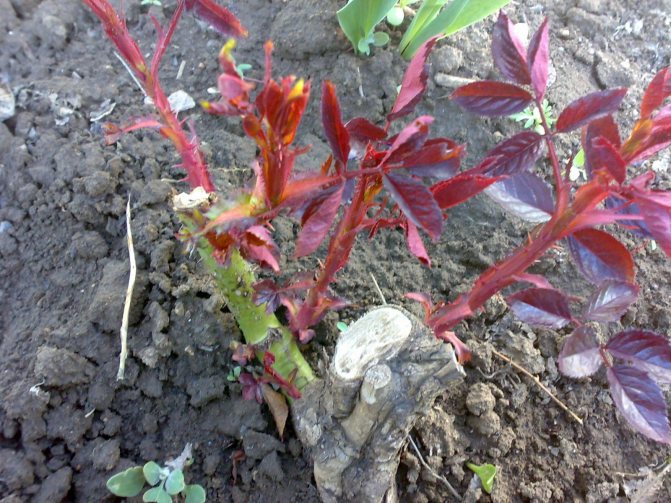

Preparing for shelter
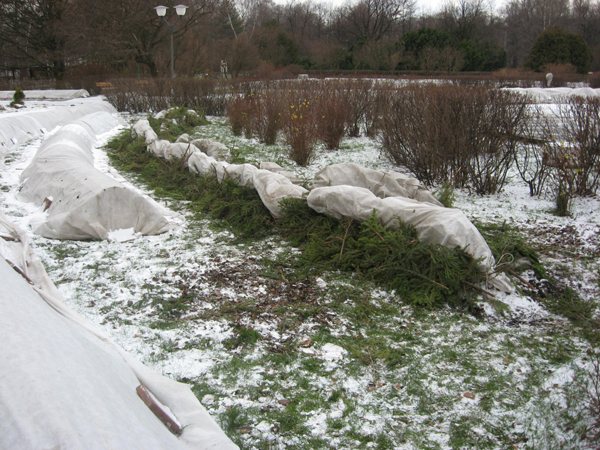

Before proceeding to the shelter, rose bushes are treated with a fungicide or iron vitriol as a preventive measure, and then spud to a height of 30 cm to protect the roots from the cold. Now you can build a shelter for wintering. The colder the growing region, the more securely the rose should be covered.
Any breathable material, spruce branches, dry leaves are suitable as a shelter. To cover miniature roses, some use special wicker domes. You can use the bulk, frame, air method. In Siberia and the Urals, lutrasil is thrown over the main shelter.
Pruning and covering roses for the winter: video
As you can see, you cannot do without pruning roses if you want to get a beautiful, well-groomed, abundantly flowering plant. This procedure will not take long, but it will give you the opportunity to be proud of your magnificent roses and demonstrate them as your achievement in the gardening business.

